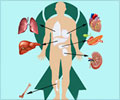The current system for allocating donated lungs skips over the patients who are most in need, say researchers.

Among the 580 locally allocated double-lung transplants performed in 2009, 480 less needy candidates, or 83 percent of all double-lung transplants, received the organs even though a well-matched candidate in greater need existed in the region.
Twenty-four percent of such cases involved skipping over regional candidates with lung allocation scores — which range from 1 to 100, based on need and likely benefit — more than 10 points higher than the local recipient. More than 7 percent of the events involved a regional candidate with a lung allocation score (LAS) more than 25 points higher than the local recipient. Overall, 185 of the bypassed regional candidates ultimately died on the waitlist.
More than a decade ago, the U.S. Department of Health and Human Services issued the "Final Rule," intended to ensure that organs were allocated "based on medical criteria, not accidents of geography." The new data, however, show that where a transplant candidate lives continues to influence access to donated lungs.
"We found that too often, and to many patients' detriment, organs are allocated according to geography rather than urgency," said Russo, assistant professor of surgery at the University of Chicago Medicine. When lungs go to less needy candidates within the local Donor Service Area and never become available to sicker candidates at the regional or national level, "this decreases the overall benefits of a transplant," he said.
One unfortunate but not unusual example was a 27-year-old man with cystic fibrosis who was in an intensive care unit awaiting a lung transplant. He had a lung allocation score of 91 out of 100, one of the highest of such scores in the U.S. at the time. He was expected to die within a week without a transplant.
Advertisement
Such circumstances are not uncommon, Russo said.
Advertisement
Russo and colleagues previously demonstrated that 82 percent of lung transplants went to patients with an LAS of less than 50. For patients in this low-priority group, five-year life expectancy even without transplant is good — better than 50 percent.
For these patients, early transplantation brings limited survival benefit, he said.
"At the same time," Russo said, "candidates most in need and who could receive the greatest benefit are dying at high rates without the benefit of transplantation." Most patients with high LAS are still alive after five years if they get transplanted quickly, but very few of those who do not get an organ survive more than a few months.
This study considered only double-lung candidates. It did not factor in the possibility of national matching or allow for blood groups to be crossed. As a result, "it likely underestimates the frequency of these events and lives lost," Russo said. "Despite recent improvements in lung allocation, significant inefficiencies remain, resulting in diminished net benefit from transplantation and lost lives."
Source-Eurekalert











